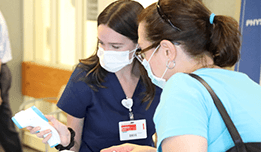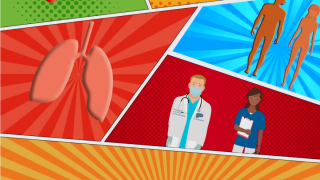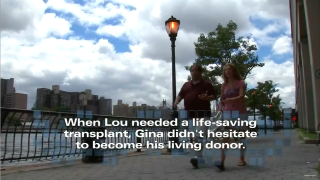
Every day, transplants bring renewed life to patients and their families and communities. A single donor can save up to eight lives through organ donation, restore sight in two people through cornea donation, and heal up to 75 others through tissue donation.
Organ donation in the United States is administered by the United Network for Organ Sharing, a non-profit, scientific and educational organization that administers the nation's only Organ Procurement and Transplantation Network (OPTN), established by the U.S. Congress in 1984.
In the U.S., over 106,000 people are currently waiting for life-saving organ transplants, and over 8,000 live right here in New York.
Enrolling in the New York State Donate Life Registry means that someday your generosity could change dozens of lives. When you register online, you can choose what organs and tissues you want to donate, and you can update your status at any time. Visit New York State Donate Life for more information in English and Spanish.
There is no age limit on who can become an organ donor. However, you must be a least 16 years or older to be on the New York State Donate Life Registry.
Most religions support organ, eye, and tissue donation. The Health Resources & Service Administration (HRSA), a U.S. government agency, has recognized NewYork-Presbyterian and its Regional Hospital Network with its Platinum award for outstanding efforts to promote donation awareness and donor registration.
Become an Organ Donor
Help save a life: sign up to become a donor today. Tell your loved ones about your legally binding decision to be a donor.
New York Residents

To register as an organ donor, enroll in the New York State Donate Life Registry.
Non-New York Residents
To register as an organ donor, enroll in the National Donate Life Registry.
Deceased Organ Donation
Deceased organ donation is the process of giving an organ or a part of an organ at the time of the donor’s death for the purpose of transplantation to another person.
Deceased Organ donation is rare: In order for a person to become an organ donor, blood and oxygen must flow through the organs until the time the organ is recovered. This requires that a person die under circumstances that have resulted in a fatal brain injury, usually from massive trauma resulting in bleeding, swelling or lack of oxygen to the brain. A person on a ventilator must pass away in a hospital for their organs to be potentially suitable for donation.
Living Organ Donation
Living organ donation offers another choice for transplant candidates, and it would initiate a chain reaction. When a recipient receives a donation from a living donor, the recipient would come off the deceased organ waiting list, thus moving everybody else up on the list and potentially saving more lives.
Living organ donation was developed as a direct result of the critical shortage of deceased donors to meet all the needs of patients awaiting organ transplant. Over the last few years, transplant surgeons and other members of transplant teams throughout the country have developed new techniques and procedures to save more patients’ lives through living donor transplants. It is now possible for a living person to donate a kidney, a portion of the liver, a portion of a lung, and, in some rare instances, a portion of the pancreas. With the availability of living organ donation, patients who are able to receive a living donor transplant can receive the best quality organ much sooner, often in less than a year.
The Gift: Donating a Kidney to a Stranger
Her chances of finding a match for a kidney transplant were 1 in 100. Here’s how a stranger helped her defy the odds — and how both their lives irrevocably changed.









